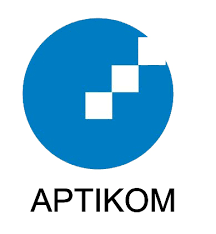Recommendation System for Prospective Bride and Groom Using Cosine Similarity Algorithm
DOI:
https://doi.org/10.18196/eist.v4i1.18683Keywords:
Cosine similarity, Ta’aruf, WebsiteAbstract
Ta'aruf is an introductory process intended for getting to know each other between two individuals which is expected to continue at the marriage level. Forum ta'aruf Padi Melati is an institution under the Regional Leadership of Muhammadiyah Bantul that aims to become a medium for cadres Nasyi'atul Aisyiyah and Muhammadiyah Youth in finding a life partner. The ta'aruf process carried out by the current Forum ta'aruf Padi Melati is still carried out using information exchange via WhatsApp through forum leaders where the candidates will send biodata and criteria for the desired partner. The purpose of this study was to design a website prototype to help the managers of the Ta'aruf Padi Melati Forum to do matching Potential Pairing with the Application of the Cosine Similarity Algorithm. The application of the Cosine Similarity algorithm aims to compare the degree of fit of several candidates. The research method is carried out in several stages starting in stages, namely interviews with the managers of the jasmine rice ta'aruf forum, then conducting by applying the Cosine similarity method to create a classification of category pairs into groups according to the degree of similarity of the criteria. The final result is the degree of match of the pair criteria expected by each participant.
References
Elysia, E., Chatra, E., & Arif, E. (n.d.). “Transformation Of The Meaning Of Ta'aruf In The Digital Era”. (In Indonesian) Jurnal Komunikasi Global, 10(1), 2021.
Ummareng, C., Nurhaeni, dan F., Studi Sistem Informasi STMIK Dipanegara Makassar Jl Perintis Kemerdekaan Km, P., & Studi Manajemen Informatika STMIK Dipanegara Makassar Jl Perintis kemerdekaan Km, P. (2018). SISTEM REKOMENDASI PENCARIAN JODOH SYARIAH MENGGUNAKAN ALGORITMA COSINE SIMILARITY BERBASIS ANDROID (Vol. 7, Issue 2).
Kurniadi, D., Farisa, S., Haviana, C., & Novianto, A. (2020). “Implementation of the Cosine Similarity Algorithm in the document archive system at Sultan Agung Islamic University”. (In Indonesian) TRANSFORMTIKA, 17(2), 124–132
Saptono, R., Prasetyo, H., & Irawan, A. (n.d.). “Combination of Cosine Similarity Method and Conditional Probability for Plagiarism Detection in the Thesis Documents Vector Space Model”. (In Indonesian) http://digilib.uns.ac.id.
Vendyansyah, N., & Pranoto, Y. A. (n.d.). “Designing and Making Applications to Detect Similarity of Answers Using the Cosine Similarity Method”. (In Indonesian)
Wahyuni, R. T., Prastiyanto, D., & Supraptono, D. E. (n.d.). “Application of Cosine Similarity Algorithm and TF-IDF Weighting in Thesis Document Classification System”. (In Indonesian)
Azhari, A., Buulolo, E., & Silalahi, N. (2022). “Text Rank-Based Thesis Lecturer Recommendation System using the Cosine Similarity Method”. (In Indonesian) Pelita Informatika : Informasi Dan Informatika, 10(3).



